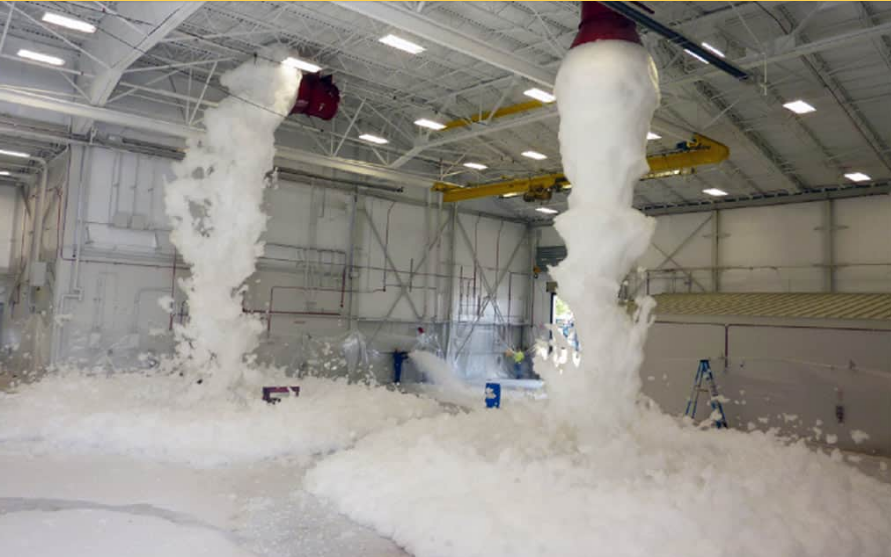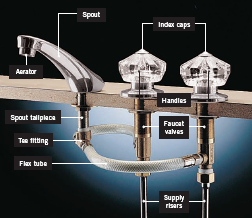Foam Fire Suppression System Work : A foam fire suppression system is a type of wet sprinkler system that combines both water and a foaming agent for large scale fire extinguishment.
 |
| Foam Fire Suppression System |
Foam Fire Suppression System Work
What is foam?
The foam in foam fire suppression systems is an extinguishing agent that can extinguish flammable or combustible liquid by cooling and separating the ignition source from the surface. The foam suppresses and smothers fire and vapors alike. It can also prevent reignition. It is also known as firefighting foam.This foaming agent is made up of small air-filled bubbles that have a lower density than water. Foam is made up of water, foam concentrate, and air. Different manufacturers have their own foam solutions and concentrate. The proportion of foam to water depends on the application.
This water-based fire sprinkler suppression system can extinguish extensive fires in mere seconds with incredible efficiency.
How do foam suppression systems put out fires?
Foam suppression systems extinguish fire by separating the fuel from the oxygen. In more technical terms, these systems are used to cool the fire and coat the fuel that the fire is consuming to prevent contact with oxygen and reduce combustion ability.To do this, the extinguishing agent (the foam) smothers or blankets the surface of the fuel. The water content of the foam then cools the fuel and the area of foam covering the fuel to prevent reignition via flammable vapors.
How do foam suppression systems discharge?
Foam suppression systems are designed much like a wet sprinkler system in that stored water flows through a network of pipes where it is then discharged through nozzles. However, the main difference with foam systems and other traditional wet sprinkler systems is the addition of the foaming agent.The foaming agent is stored separately from the water and the two are mixed within the piping system prior to discharge.
At the end of the piping is a nozzle. The foaming agent is added or ejected into the water at the very last moment before discharge. When the water mixes with the foaming agent, expansion occurs and creates an immense coverage of foam to fill expansive areas.
What are the common uses or applications for foam systems?
You’ll typically find foam suppression systems in large areas where there is a lot of flammable or combustible liquids. For example, some of the common uses include:- Aircraft hangars
- Warehouses
- Marine applications
- Processing areas
- Flammable liquid storage as fuel
- Jet engine testing facilities
What are the main types of foam?
There are three types of foaming agent that have varying characteristics like expansion rate.These types include low, medium, and high expansion systems.
Expansion rate is the volume of finished foam divided by the volume of foam solution used to create the finished foam. For example, a ratio of 5 to 1 would mean that one gallon of foam solution after aeration would fill a 5-gallon container with the expanded foam agent.
Low expansion foams have the lowest viscosity, or thickness/consistency, and expand at a ratio of between 2 to 1 and 20 to 1. Medium expansion foams expand at a ratio of 20 to 1 and 200 to 1. High expansion foams have an expansion ratio above 200 to 1.
All foams can quickly cover large areas, but at varying rates and density. As a result, low expansion foams are typically Each offers its own level of protection that is based on the needs of the facility in which the system is set to protect.
DOWNLOAD Foam Fire Extinguishing System Calculations.
What are the benefits of a foam suppression system?
There are multiple benefits to foam suppression systems. These systems are quite efficient and effective when used correctly.Foam systems have very minimal negative environmental impact. The foaming agent is readily biodegradable in natural environments and sewage treatment facilities.
Foam suppression systems can cover larger areas, filling a huge warehouse for example, in mere seconds. These systems are ideal if you need an extinguishing agent to dump and expand to cover a huge area fast.
Lastly, foam suppression systems are typically more cost effective from both an installation and maintenance standpoint.
What considerations should be made before choosing a foam system?
As beneficial and effective foam suppression systems can be, there are a few considerations.Foam suppression systems require a lot of water. This means there needs to be access to an extensive water supply.
The cleanup process after a foam suppression system discharges can be quite the job. The foam needs to be contained and kept onsite during clean-up which may require additional drainage.
Finally, just like traditional wet pipe systems, foam systems are also susceptible to freezing.
DOWNLOAD also FM 200 Fire Suppression Calculator ( Excel Sheet ).




0 Comments